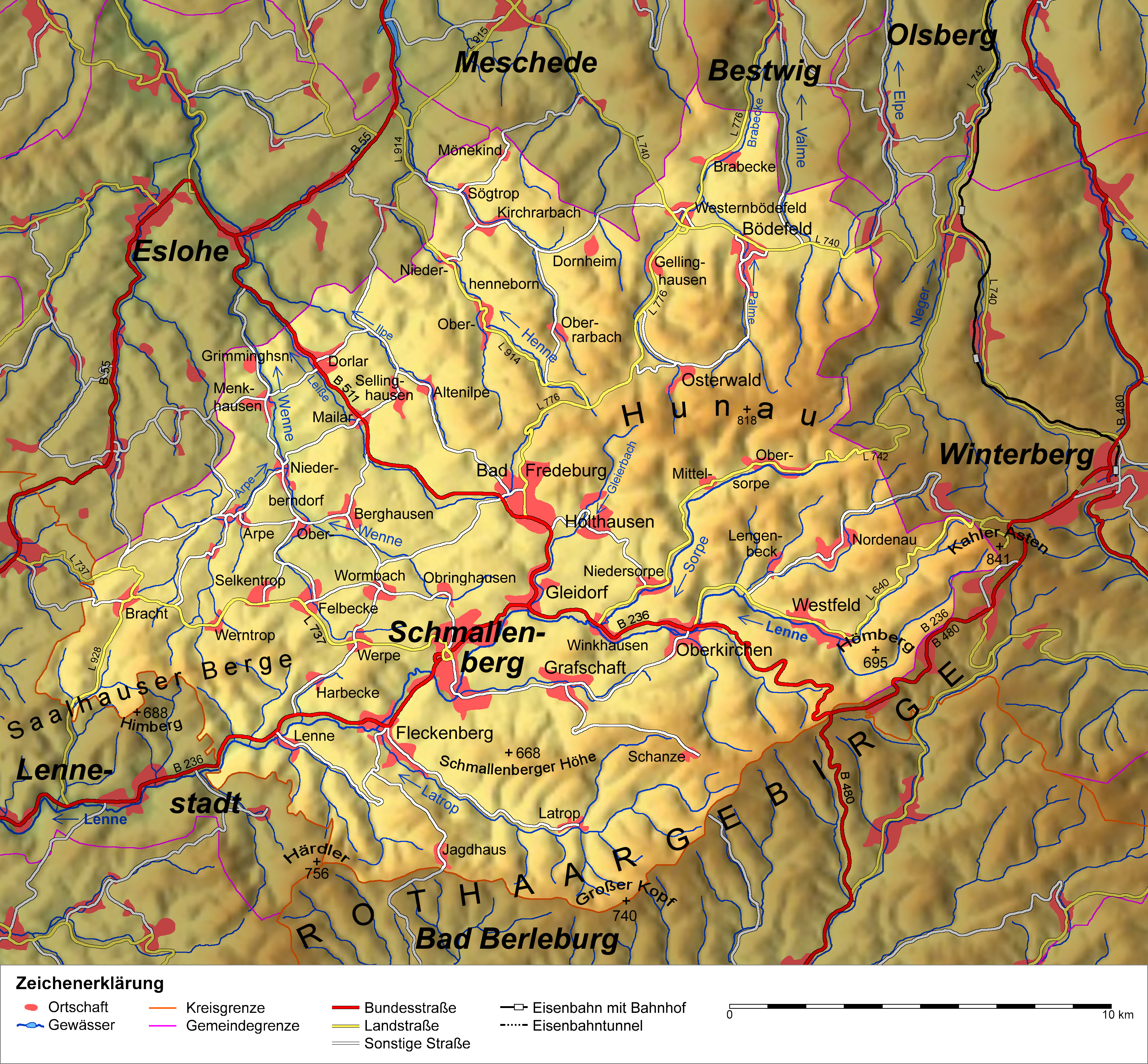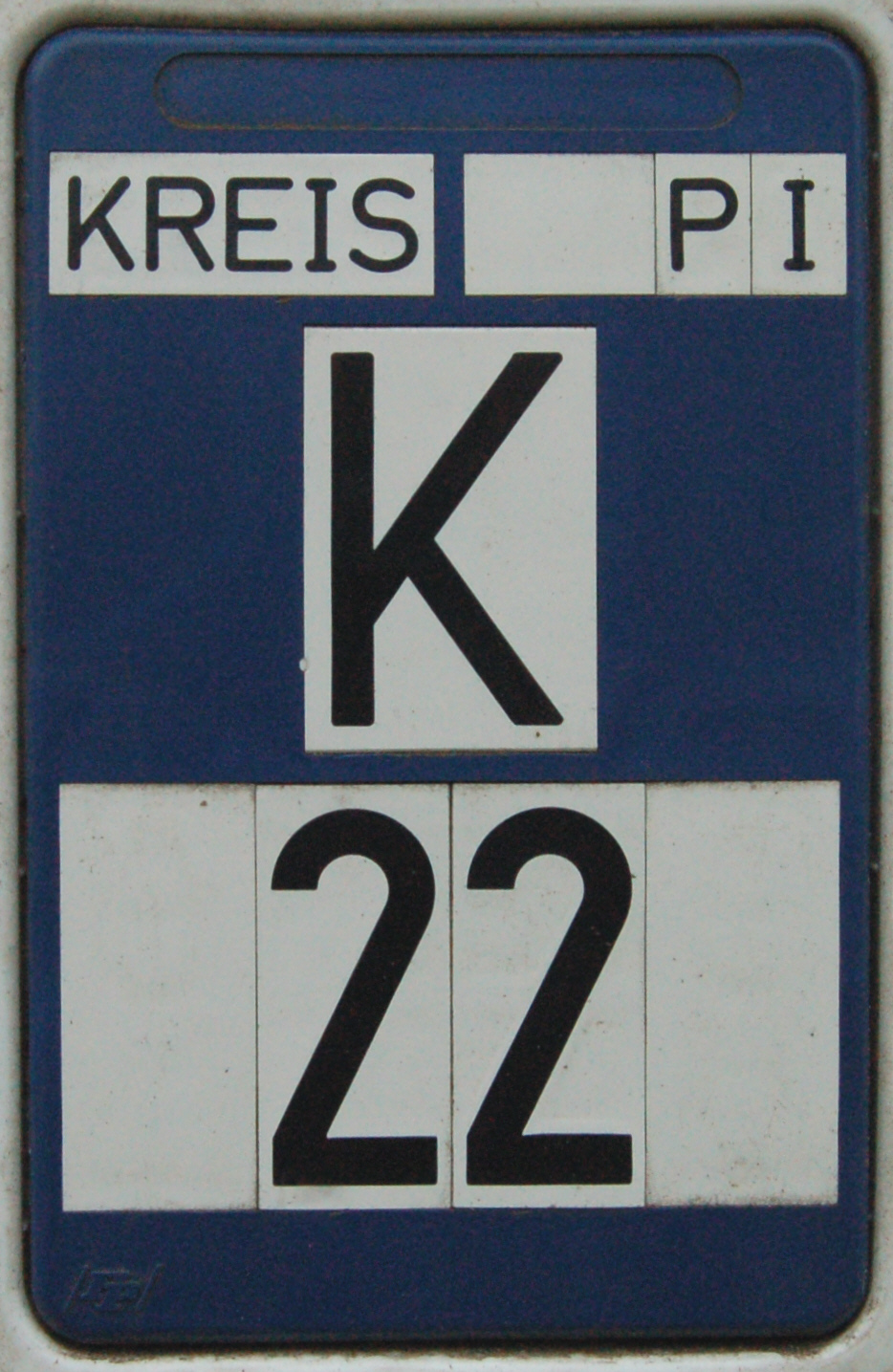|
Niederberndorf
Niederberndorf is a locality in the municipality Schmallenberg in the High Sauerland District in North Rhine-Westphalia, Germany. The village has 205 inhabitants and lies in the north of the municipality of Schmallenberg at a height of around 341 m. In the village centre the river Arpe flows in the and the Kreisstraße
A Kreisstraße (literally: "district road" or "county road") is a ...
[...More Info...] [...Related Items...] OR: [Wikipedia] [Google] [Baidu] |
Arpe (Wenne, Niederberndorf)
Arpe is a river of North Rhine-Westphalia, Germany, in the West of the Hochsauerlandkreis. It is a left tributary of the Wenne which it joins at Niederberndorf, a district of Schmallenberg. It should not be confused with the Arpe, also left a tributary of the Wenne in the Hochsauerlandkreis, but joining at Berge, a district of Meschede. See also *List of rivers of North Rhine-Westphalia A list of rivers of North Rhine-Westphalia, Germany: A * Aa, left tributary of the Möhne * Aa, left tributary of the Nethe * Aa, left tributary of the Werre * Aabach, tributary of the Afte * Aabach, small river in the Ems river system * Abbabac ... Rivers of North Rhine-Westphalia Rivers of Germany {{NorthRhineWestphalia-river-stub ... [...More Info...] [...Related Items...] OR: [Wikipedia] [Google] [Baidu] |
Schmallenberg
Schmallenberg ( Westphalian: ''Smalmereg'') is a town and a climatic health resort in the High Sauerland District, Germany. By area, it is the third biggest of all cities and towns of the state of North Rhine-Westphalia and the second biggest of the region of Westphalia. With small Schmallenberg central town and the rural Bad Fredeburg Kneipp health resort the town has two urban settlements. Additionally, 82 villages and hamlets belong to the town's territory. Also being called “the Schmallenberg Sauerland”, the Town of Schmallenberg is famous for its total of fiveStadt Schmallenberg: Kurort health resorts and nineSchmallenberger Sauerland: Golddörfer Schmallenberg und Esloh villages which have been awarded gold for their beauty in the nationwide “” contest. Geography Schmallenberg is located in the southeast of the Sauerland mountainous landscape. The Rothaar Mountains make up a part of the town's territory. Through the central town flows the river Lenne. It is sit ... [...More Info...] [...Related Items...] OR: [Wikipedia] [Google] [Baidu] |
Wenne
Wenne is a river of North Rhine-Westphalia, Germany. The river springs in a forest area near Obringhausen. It flows through the villages of Niederberndorf, Menkhausen, Grimminghausen (Schmallenberg), Lochtrop, Frielinghausen, Bremke, Wenholthausen and Berge before it flows into the Ruhr on the left at Wennemen at 234 m above sea level. Gallery File:NSG Wennetal nördlich von Wenholthausen fd (2).jpg, Wenne near Wenholthausen File:Wenne (Fluss) in Meschede-Berge.jpg, Wenne near Berge See also *List of rivers of North Rhine-Westphalia A list of rivers of North Rhine-Westphalia, Germany: A * Aa, left tributary of the Möhne * Aa, left tributary of the Nethe * Aa, left tributary of the Werre * Aabach, tributary of the Afte * Aabach, small river in the Ems river system * Abbabac ... References Rivers of North Rhine-Westphalia Rivers of Germany {{NorthRhineWestphalia-river-stub ... [...More Info...] [...Related Items...] OR: [Wikipedia] [Google] [Baidu] |
Menkhausen
Menkhausen is a locality in the municipality Schmallenberg in the district Hochsauerlandkreis in North Rhine-Westphalia, Germany. The village has 86 inhabitants and lies in the north of the municipality of Schmallenberg at a height of around 330 m. In the village centre the Kreisstraße 32 meets the Kreisstraße 20. The river flows through the village. Berghausen borders on the villages of , Landenbeckerbruch, Niederlanden ... [...More Info...] [...Related Items...] OR: [Wikipedia] [Google] [Baidu] |
Mailar
Mailar is a locality in the municipality Schmallenberg in the district Hochsauerlandkreis in North Rhine-Westphalia, Germany. The village has 111 inhabitants and lies in the north of the municipality of Schmallenberg at a height of around 360 m on the 511. The river Leiße flows through the village. Mailar borders on the villages of , |
Berghausen (Schmallenberg)
Berghausen is a locality in the municipality Schmallenberg in the district Hochsauerlandkreis in North Rhine-Westphalia, Germany. The village has 221 inhabitants and lies in the north of the municipality of Schmallenberg at a height of around 394 m. In the village centre the 25 meets the Kreisstraße 32. Berghausen borders on the villages of , , Oberberndorf, |
Arnsberg (region)
Arnsberg () is one of the five Regierungsbezirke of North Rhine-Westphalia, Germany, located in the west-central part of the country. It covers the Sauerland hills as well as the east part of the Ruhr area. The region was founded in 1815 as a subdivision of the Prussian Province of Westphalia. ''Kreise''(counties) # Ennepe-Ruhr # Hochsauerland # Märkischer Kreis # Olpe # Siegen-Wittgenstein # Soest # Unna Unna is a city of around 59,000 people in North Rhine-Westphalia, Germany, the seat of the Unna district. The newly refurbished Unna station has trains to all major cities in North Rhine Westphalia including Dortmund, Cologne, Münster, Hamm, ... ''Kreisfreie Städte''(independent cities) # Bochum # Dortmund # Hagen # Hamm # Herne Economy The Gross domestic product (GDP) of the region was 124.8 billion € in 2018, accounting for 3.7% of German economic output. GDP per capita adjusted for purchasing power was 32,000 € or 106% of the EU27 average in the s ... [...More Info...] [...Related Items...] OR: [Wikipedia] [Google] [Baidu] |
Hochsauerlandkreis
Hochsauerlandkreis (meaning “High Sauerland District” in German) is a Kreis (district) in the east of North Rhine-Westphalia, Germany. Neighboring districts are Soest, Paderborn, Höxter, Waldeck-Frankenberg, Siegen-Wittgenstein, Olpe, Märkischer Kreis. The district is named “High Sauerland” because two of the highest mountains of the Sauerland mountainous landscape, Langenberg and Kahler Asten are in its territory. With 2,766 ft / 843 m (Langenberg) and 2,762 ft / 842 m (Kahler Asten) these are also the highest mountains of North Rhine-Westphalia. History The district was established in 1975 in the reorganization of the districts in North Rhine-Westphalia by merging the previous districts Arnsberg, Brilon and Meschede. Geography Geographically the district covers a big part of the Sauerland mountains, including the highest and third highest elevation – the Langenberg near Olsberg with 2,766 ft / 843 m, and the better known Kahler Asten with 2 ... [...More Info...] [...Related Items...] OR: [Wikipedia] [Google] [Baidu] |
North Rhine-Westphalia
North Rhine-Westphalia (german: Nordrhein-Westfalen, ; li, Noordrien-Wesfale ; nds, Noordrhien-Westfalen; ksh, Noodrhing-Wäßßfaale), commonly shortened to NRW (), is a States of Germany, state (''Land'') in Western Germany. With more than 18 million inhabitants, it is the List of German states by population, most populous state of Germany. Apart from the city-states, it is also the List of German states by population density, most densely populated state in Germany. Covering an area of , it is the List of German states by area, fourth-largest German state by size. North Rhine-Westphalia features 30 of the 81 German municipalities with over 100,000 inhabitants, including Cologne (over 1 million), the state capital Düsseldorf, Dortmund and Essen (all about 600,000 inhabitants) and other cities predominantly located in the Rhine-Ruhr metropolitan area, the largest urban area in Germany and the fourth-largest on the European continent. The location of the Rhine-Ruhr at the h ... [...More Info...] [...Related Items...] OR: [Wikipedia] [Google] [Baidu] |
Germany
Germany,, officially the Federal Republic of Germany, is a country in Central Europe. It is the second most populous country in Europe after Russia, and the most populous member state of the European Union. Germany is situated between the Baltic and North seas to the north, and the Alps to the south; it covers an area of , with a population of almost 84 million within its 16 constituent states. Germany borders Denmark to the north, Poland and the Czech Republic to the east, Austria and Switzerland to the south, and France, Luxembourg, Belgium, and the Netherlands to the west. The nation's capital and most populous city is Berlin and its financial centre is Frankfurt; the largest urban area is the Ruhr. Various Germanic tribes have inhabited the northern parts of modern Germany since classical antiquity. A region named Germania was documented before AD 100. In 962, the Kingdom of Germany formed the bulk of the Holy Roman Empire. During the 16th ce ... [...More Info...] [...Related Items...] OR: [Wikipedia] [Google] [Baidu] |
Kreisstraße
A Kreisstraße (literally: "district road" or "county road") is a class of road in Germany. It carries traffic between the towns and villages within a '' Kreis'' or district or between two neighbouring districts. In importance, the ''Kreisstraße'' ranks below a ''Landesstraße'' (or, in Bavaria and Saxony, a ''Staatstraße'', i.e. a state road), but above a ''Gemeindestraße'' or "local road". ''Kreisstraßen'' are usually the responsibility of the respective rural district (''Landkreis'') or urban district (''Kreisfreie Stadt''), with the exception of high streets through larger towns and villages. Kreisstraßen are usually dual-lane roads but, in a few cases, can be built as limited-access dual carriageways in densely populated areas. Numbering Unlike local roads (''Gemeindestraßen'') the ''Kreisstraßen'' are invariably numbered, but their numbering is not shown on signs. The abbreviation is a prefixed capital letter K followed by a serial number. In most states the car n ... [...More Info...] [...Related Items...] OR: [Wikipedia] [Google] [Baidu] |
Villages In North Rhine-Westphalia
A village is a clustered human settlement or community, larger than a hamlet but smaller than a town (although the word is often used to describe both hamlets and smaller towns), with a population typically ranging from a few hundred to a few thousand. Though villages are often located in rural areas, the term urban village is also applied to certain urban neighborhoods. Villages are normally permanent, with fixed dwellings; however, transient villages can occur. Further, the dwellings of a village are fairly close to one another, not scattered broadly over the landscape, as a dispersed settlement. In the past, villages were a usual form of community for societies that practice subsistence agriculture, and also for some non-agricultural societies. In Great Britain, a hamlet earned the right to be called a village when it built a church. [...More Info...] [...Related Items...] OR: [Wikipedia] [Google] [Baidu] |

.jpg)

